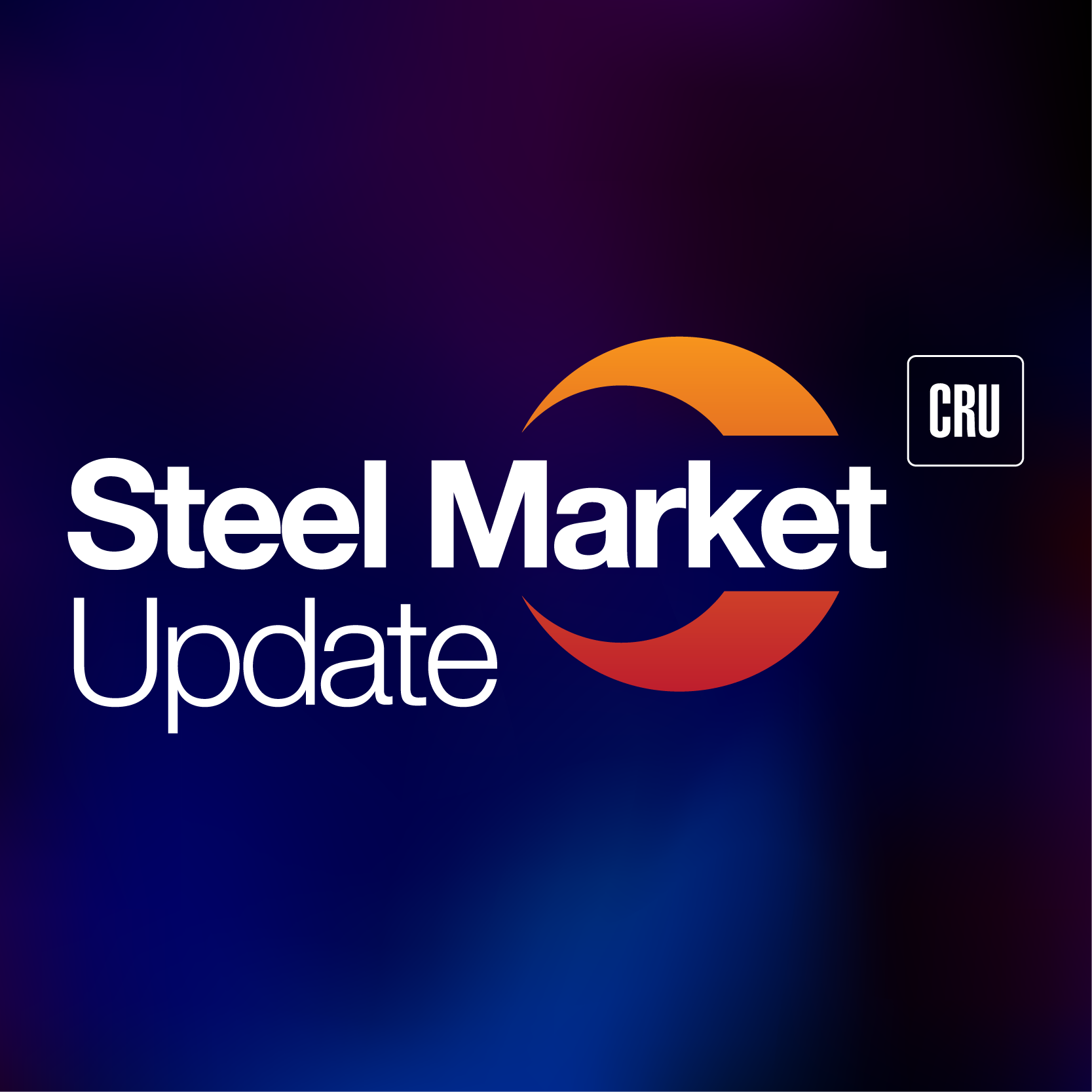Analysis

October 9, 2025
Steel market chatter this week
Written by Brett Linton
Earlier this week, SMU polled steel buyers on an array of topics, ranging from market prices, demand, and inventories to tariffs, imports, and evolving market events.
We are sharing a selection of the comments we received below, in each buyer’s own words.
Before diving in, we asked our internal AI tool to analyze the responses we collected and to highlight four key themes. Here’s what it found:
- Prices are expected to be flat to slightly down. Any upside is likely modest and tied to outages/seasonality and nearing a market bottom.
- Demand is stable to declining, and additional softness is expected as we get toward the typical holiday slowdown. Pockets of strength are isolated.
- Inventory is moving slower than last year amid weak sell-through, tariff uncertainty, and more cautious stocking – all of which reinforces flat-to-soft pricing.
- Imports remain generally unattractive because of tariffs. But those same tariffs are seen as creating uncertainty and depressing demand – especially with only limited, slow-moving reshoring.
Want to share your thoughts? Contact david@steelmarketupdate.com to be included in our market questionnaires.
How do you expect prices to trend over the next three months?
“Flat. Nothing in the market to cause strength or further weakness.”
“Some room for prices to firm up, but not much. Just less offers under the low end of the range as outages and less imports set in.”
“Holding at current lows.”
“Down in Sept., flat in Oct., perhaps up a bit in Nov.”
“Flat to up slightly. But nowhere near to what current forward curve predicts as demand is still weak.”
“Holding at current lows.”
“They should stay fairly flat, maybe a slight bump. There is no great demand right now.”
“Plateau, then slight increases.”
“Move up 5-10% due to improving demand.”
“I expect prices will increase due to mill outages and tariffs.”
Is demand improving, declining or stable?
“Demand is stable. Customers buying only what they need.”
“Demand is stable, but will decline as we head into the holidays.”
“Stable. Industry near bottom and not going lower.”
“Still stable at best.”
“Stable due to lower inventory.”
“Declining – why would anyone make a major purchase right now?”
Is inventory moving faster or slower than this time last year?
“Slower due to tariff implications.”
“Slower, weak demand.”
“Slower.”
“Similar pace to last year.”
“About the same.”
“Inventory is moving faster this year. Remember last year, with the election, shipments fell off and auto went down.”
Are President Trump’s tariff policies helping your business?
Over half of the buyers responding to this question (52%) feel their businesses are not benefiting from tariffs. Of the remainder, 34% are unsure how the policies will impact their business. And just 14% think tariffs are helping. Comments included:
“You can’t run the play both ways, but I believe pricing remains propped up due to tariffs, as current demand would not historically support ~$800/ton HR.”
“I feel they are contributing to our customers slowing their spending (they aren’t the only reason though).”
“I deal a lot with Mexican companies, and they are totally depressed. What happened to USMCA partnerships?”
“They’ve created chaos, which isn’t good for anyone who needs capex dollars to flow.”
“No. We can’t pass on the slightly higher price of steel. A Canadian mill politely withdrew all offers.”
“No, too volatile, nothing sticks.”
“They killed demand.”
“Causing too much uncertainty.”
“Pushing pricing up in a down market.”
“Yes, inventory values have not plummeted.”
Are you seeing evidence of manufacturing reshoring to the US because of Trump’s tariffs?
Almost half of respondents (40%) reported they are not seeing any signs of reshoring. The remainder were split, with 30% responding that it is too early to tell and 30% saying they have seen some evidence of reshoring. Comments included:
“Small volume, but lots of planning on bigger volumes.”
“Slow process, but it is happening. American manufacturing did not erode in less than a calendar year, and its return will also be a multi-year process.”
“Offshore pricing is offsetting some of the tariff costs.”
“Simply in conversation.”
Are imports more attractive than domestic material?
“No, due to tariffs and potential retaliation by the administration.”
“No, volatility and lead times are keeping people on the sidelines.”
“Not even a little.”
“Imports are not yet more attractive.”
“No, nothing is attractive with tariffs.”
“No, lead-time and tariff hurdles.”
What’s something that’s going on in the market that nobody is talking about?
“Imports have been cratered for months, scrap has been flat then down, mills have tried using outages to try and drive up costs, and it simply won’t work without demand increasing or a lot of restraint shown from mills. We broke our economy – now people are seeing the results of our impulsive decisions.”
“Flurry of M&A activity on the service center front will continue into 2026.”
“Pig iron pricing and availability.”
“Import volumes falling and Algoma exiting US supply.”
“Will the economy improve to the point where more homeowners are willing to spend money on lifestyle upgrades to homes?”
“Concerns about ICE impacts on plant workers/production.”







